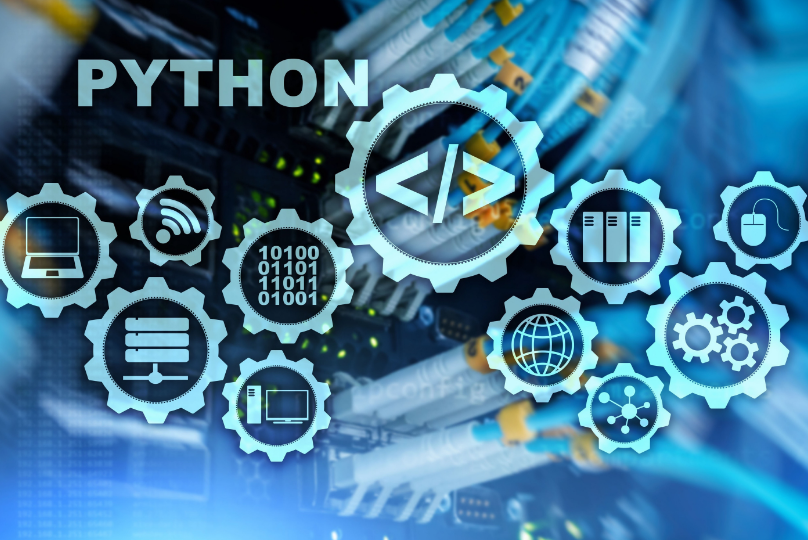Edition: October 19th, 2021
Curated by the Knowledge Team of ICS Career GPS

- Excerpts from article by Aratrika Dutta, published on analyticinsight.net
Python is one of the most popular programming languages across the globe and it offers the most promising career opportunities as well. This demand for Python developers is increasing every year. There is a reason why this high-level programming language is so popular.
The python language is one of the most accessible programming languages available because it has simplified syntax and is not complicated, which gives more emphasis on natural language. Python is also one of the best tools for creating dynamic scripts on large as well as small scales.
Here’s an indicative list of the top Python jobs that you can pursue to boost your career in Python:
1. Python Developer
A Python Developer is responsible for the coding, designing, deploying, and debugging of development projects, typically on the server-side (or back-end). They may also help organisations with their technological framework.
Responsibilities
- Build websites
- Resolve problems related to data analytics
- Write codes that are both reusable and efficient
- Optimise data algorithms
- Implement data protection and security
2. Data Analyst
One of the most common uses for Python is its ability to create and manage data structures quickly. Pandas, for instance, offers a plethora of tools to manipulate, analyse, and even represent data structures and complex datasets. Additionally, you can use Python /R to write your own data analysis algorithms that can be directly integrated into your business intelligence tools via API.
Responsibilities
- Analysing results
- Reporting the results back to the relevant members of the business
- Identifying patterns and trends in data sets
- Working alongside teams within the business or the management team to establish business needs
- Defining new data collection and analysis processes
3. Software Developer
The role of a software developer engages in identifying, designing, installing, and testing a software system they’ve built for a company from the ground up. It can range from creating internal programs that can help businesses be more efficient to produce systems that can be sold. Python is a common language used in the software development process, making knowledge of the language key to landing a job as a software developer.
Responsibilities
- Researching, designing, implementing, and managing software programs
- Testing and evaluating new programs
- Identifying areas for modification in existing programs and subsequently developing these modifications
- Writing and implementing efficient code
- Determining operational practicality
- Developing quality assurance procedures
- Deploying software tools, processes, and metrics
4. Python Web Developer
A Python web developer is responsible for writing server-side web application logic. Python web developers usually develop back-end components, connect the application with the other third-party web services, and support the front-end developers by integrating their work with the Python application.
Responsibilities
- Writing reusable, testable, and efficient code
- Integration of user-facing elements developed by front-end developers with server-side logic
- Design and implementation of low-latency, high-availability, and performant application
- Write reusable and efficient code.
- An expert in Python, with knowledge of at least one Python web framework such as Django, Flask, etc.
- Basic understanding of front-end technologies such as JavaScript, HTML5, and CSS3
5. Full-Stack Developer
A full-stack developer is someone who works with the back end of an application as well as the front end. The full-stack engineer job description usually includes using a range of different technologies and languages to develop applications. Full Stack Developers approach software holistically since they cater to both user experience and functionality.
Responsibilities
- Helping with the design and development of software
- Testing and debugging software to keep it optimised
- Writing clean code for the front and back end of the software
- Designing user interactions on the web application itself
- Creating servers and databases for the back end of the software
- Ensuring cross-platform compatibility and optimisation
- Testing and maintaining the responsive design of applications
- Working with graphic designers to design new features
- Developing APIs and RESTful services
- Keeping up with technological advances to optimise their software
6. Product Manager
Product Managers are always assessing user data and audience behavior to help guide product decisions. Python can be helpful in effectively evaluating the data to make smart business decisions.
Responsibilities
- Defining the product vision, strategy, and roadmap
- Gathering, managing, and prioritising market/customer requirements
- Acting as the customer advocate articulating the user’s and/or buyer’s needs
- Working closely with engineering, sales, marketing, and support to ensure business case and customer satisfaction goals are met
- Has technical product knowledge or specific domain expertise
- Running beta and pilot programs during the qualification phase with almost final products and samples
- Regularly reviewing completed work and checks with customers to ensure that it meets the customer expectations
7. Machine Learning Engineer
The role of a machine learning engineer is to build and train machines, programs, and other computer-based systems for applying these to making predictions. Python becomes ideal for this role because of its capability of data automation and algorithms.
Responsibilities
- To study and convert data science prototypes
- To design and develop machine learning systems and schemes
- To perform statistical analysis and fine-tune models using test results
- To find available datasets online for training purposes
- To train and retrain ML systems and models as and when necessary
- To extend and enrich existing ML frameworks and libraries
- To develop machine learning apps according to customer/client requirements
- To research, experiment with, and implement suitable ML algorithms and tools
- To analyse the problem-solving capabilities and use-cases of ML algorithms and rank them by their success probability
…
(Disclaimer: The opinions expressed in the article mentioned above are those of the author(s). They do not purport to reflect the opinions or views of ICS Career GPS or its staff.)



